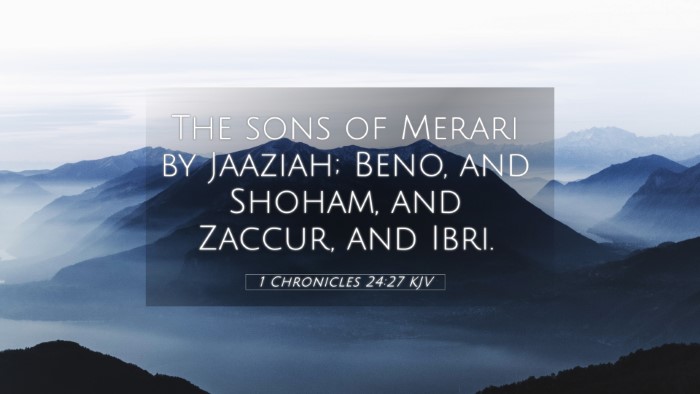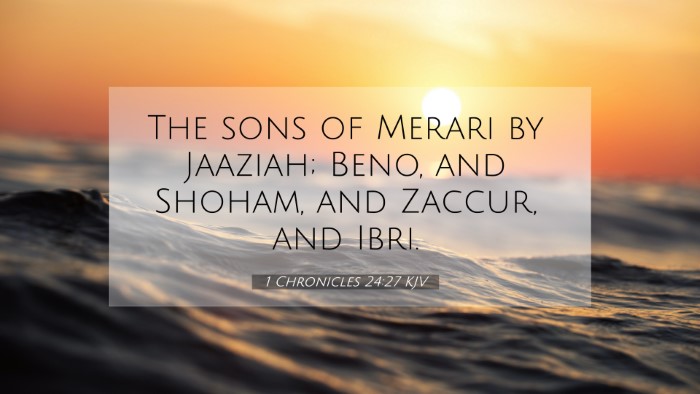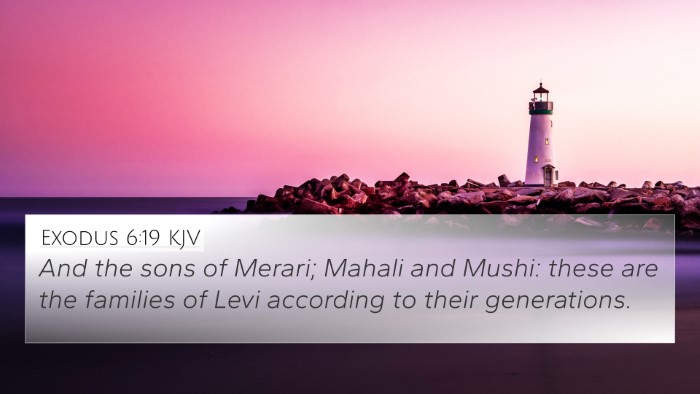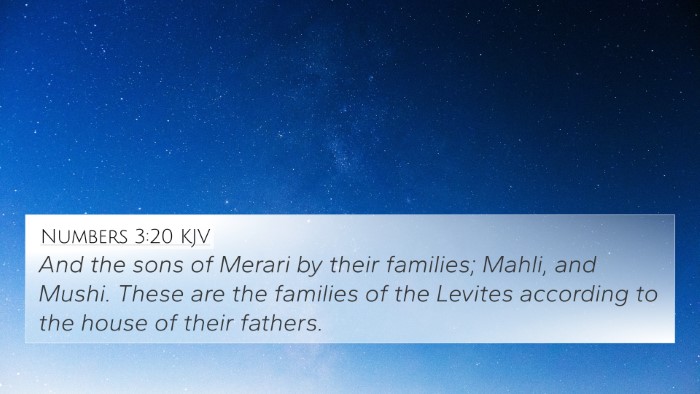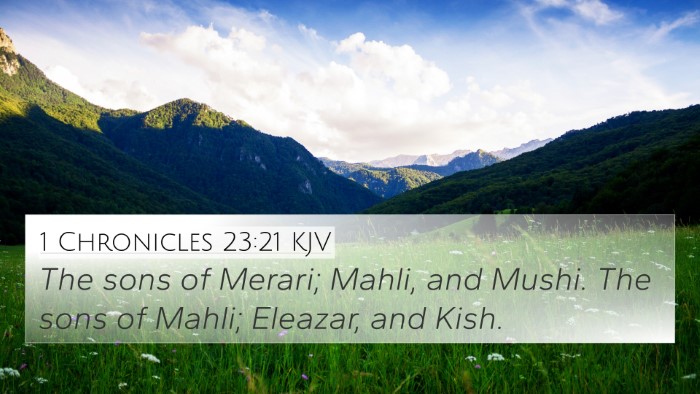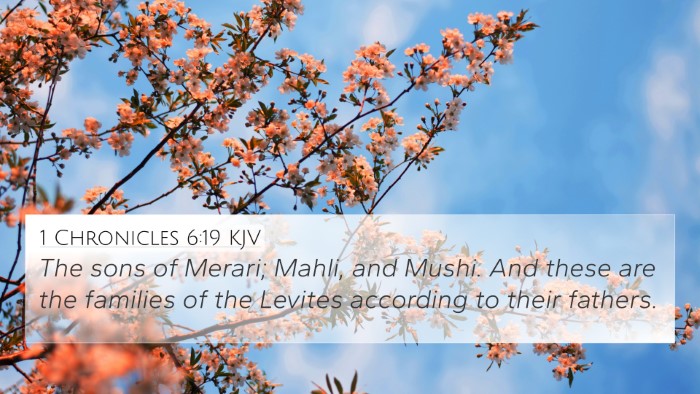1 Chronicles 24:27 - Summary and Interpretation
This verse falls within a genealogical and administrative context that highlights the organization of the priestly duties in ancient Israel. Here, the verse specifically notes the descendants of a priestly leader, emphasizing the importance of lineage and assigned responsibilities within the Levitical structure.
According to Matthew Henry's Commentary, this text indicates a structured approach to overseeing priestly tasks, assigning duties effectively among the different houses of Levi. This organization reflects God's order in establishing worship practices. The priests' duties were paramount to maintaining the sanctity and integrity of worship, serving as mediators between God and His people.
Albert Barnes adds that this division of labor among the priests illustrates the principle of shared responsibility in ministry. It signifies that each family within the priestly line had specific roles to play in the service of the temple, promoting not only efficiency but also unity among the tribes of Israel. The meticulous attention to lineage further emphasizes God's covenantal faithfulness to the families He has chosen.
In Adam Clarke's Commentary, it is noted that this verse serves as a reminder of God's providence over the tabernacle and later the temple, showcasing His sovereign direction in the organization of religious practices. The mention of lineage also serves a didactic purpose, teaching future generations about the importance of proper worship and dedication to God through their established family lines.
Key Themes and Cross-References
- Temple Organization: 1 Chronicles 23:28-32 – Discusses the duties of the Levites.
- Priestly Lineage: Exodus 28:1 – The selection of Aaron and his sons for priesthood.
- Shared Responsibilities: Numbers 3:6-10 – Assigns roles within the Levite clan.
- Covenant Faithfulness: Deuteronomy 10:8 – The role of the Levites as ministering priests.
- Divine Order: 1 Corinthians 14:33 – God is not a God of confusion but of peace.
- Worship and Service: Psalm 100:2 – Serving the Lord with gladness.
- Historical Context: Ezekiel 44:10-14 – Talks about the priests and their duties in exile.
- Responsibilities of Leaders: Hebrews 5:4 – The calling of priests comes from God.
- Jesus as High Priest: Hebrews 7:14 – Jesus, descended from Judah, establishing a new priesthood.
- Continuity of Worship: Romans 12:1 – Presenting ourselves as living sacrifices, holy and pleasing to God.
Connecting Themes and Verse Structures
This verse serves as a pivotal point for understanding how the Old Testament priesthood sets the stage for themes explored in the New Testament about ministry and service to God. The connections between this verse and others illustrate God's established order in worship and leadership, and their implementation shows how God's purposes transcend generations.
Comparative Analysis and Insights
When examining 1 Chronicles 24:27, it is vital to view this passage through the lens of cross-referencing Biblical texts. This strengthens one's understanding of scriptural doctrine and reveals the thematic threads that link Old Testament priestly duties with New Testament practices of worship. This inter-Biblical dialogue enriches the interpretation of the role of priests in facilitating access to God and underscores the continuity of God's plan for redemption throughout the Biblical narrative.
Tools for Understanding and Further Study:
- Utilizing a Bible Concordance to trace relevant themes and connections across the scriptures.
- Employing Cross-reference Bible study methods that highlight parallels between various Biblical texts.
- Using a Comprehensive Bible cross-reference guide to aid in identifying scriptural connections more effectively.
- Accessing Bible reference resources for an in-depth understanding of the themes discussed in 1 Chronicles 24:27.
- Engaging in Bible chain references to see how verses link together within thematic studies.
This systematic approach to understanding 1 Chronicles 24:27 through its verse connections can lead to deeper insights into the nature of God's covenant with His people and the significance of designated roles in His divine plan.

